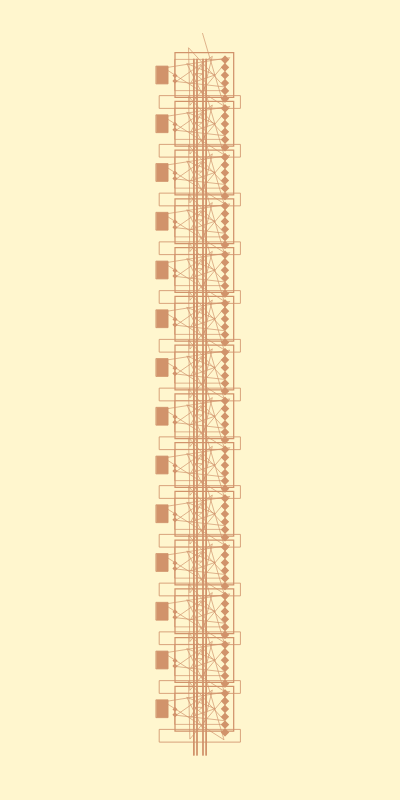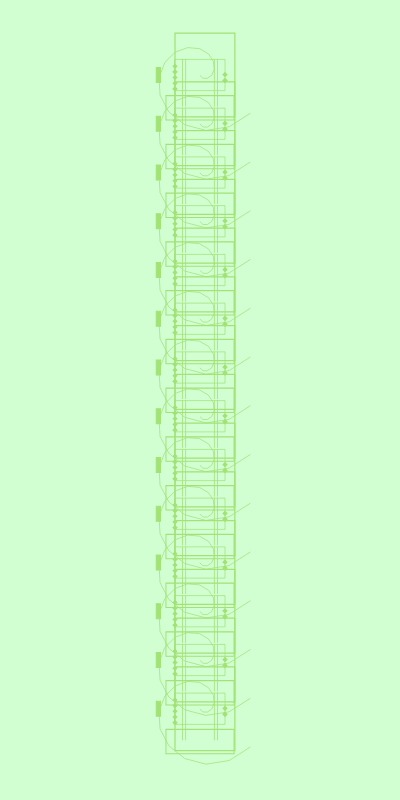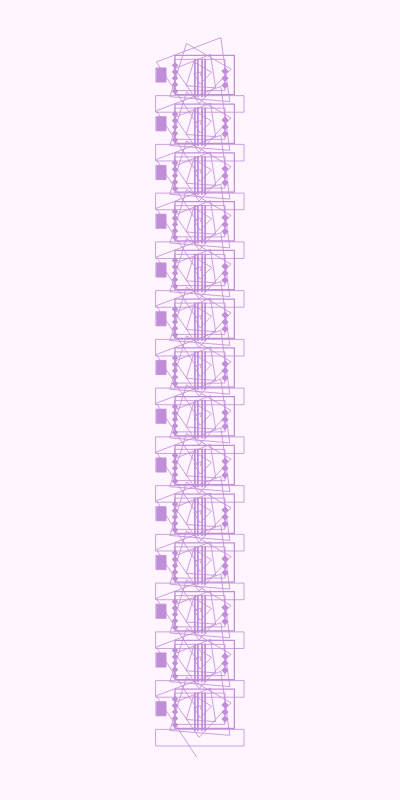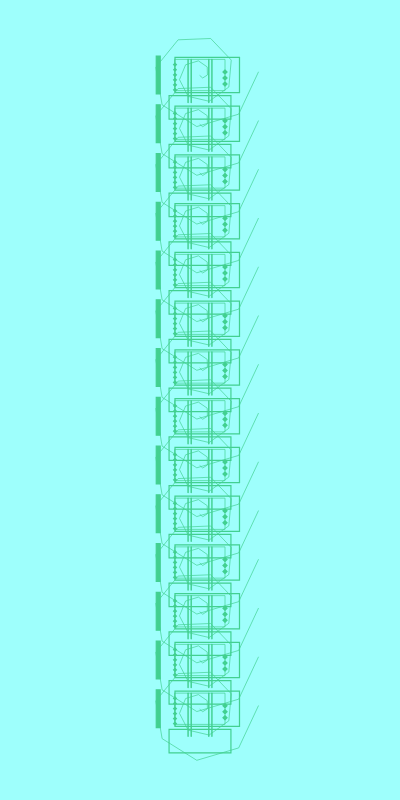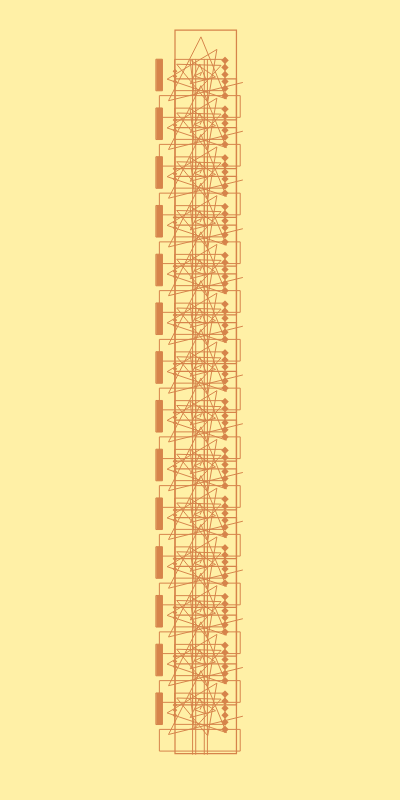by Henry Lamiña
Stamps of the digital skin
IPFS

20 December 2023•TEZOS•IPFS
“Stamps of the digital skin” is the result of a research process around tokenization technologies and generative art, this project was carried out within the framework of the Crypto Residency-Blockchain Fieldwork program, organized by Taipei Treasure Hill Artist Village.
The project started from the idea of imagining the web 3.0 as a digital skin shared by all internet users, a collective skin on which we have begun to "stamp" a new visual imaginary.
In this sense, what is proposed through this project is to open questions about the meaning we want to give to this new skin, that is, to collectively imagine the future of the web 3.0.
It is worth mentioning that this project was developed in relation to "Generative Taipei On-Site", an exhibition project by VolumDAO that explores from different perspectives the overlaps or limits between object art, digital art and art generated by blockchain. “Stamps of the digital skin” is in dialogue with the section called "Interpretation", in which Yi-Wen and Nineteen propose an interesting relationship between generative art and Miao embroideries, object pieces that belong to a period of non-digital history.
Thus, “Stamps of the digital skin” explores the limits of the relationships that can exist between pre-Columbian art from Latin America, generative art and blockchain technologies; it is a way of reinterpreting the "ways of making" of the past based on the imaginaries that digital technologies can offer us today.
To put this idea into practice, the pre-Columbian seal was taken as a motif for reflection, which, similar to Miao embroidery, is made up of patterns and rules.
Pre-Columbian seals are cylindrical ceramic objects that were made in abundance by the natives of the Latin American continent before the period of colonization. The use to which these objects were put is still unknown, as much of the indigenous memory of Latin America was lost during the process of colonization.
It is also not known what materials these designs were stamped on, but it is believed that they were used to stamp symbols on the body.
The Brazilian artist Anita Ekma proposes through performative practices to recover the technology of pre-Columbian stamps, this artist considers the hands painted and stamped with ochre on stones and caves all over the world as a symbolic milestone of the emergence of performance, body painting and the act of stamping.
Thus, if pre-Columbian stamps were used to stamp symbols on the body, the present project proposes to stamp a reinterpretation of these symbols on the digital skin we share today, the web 3.0.
The aim of this approach was to trace a reflection on the possible relationships between these objects, whose meaning or sense has been lost or erased, and the blockchain and web 3.0 technologies that formulate the creation of a shared interplanetary file system, which could preserve our collective memory online and without it ceasing to be ours.
The idea is to emphasize the meanings, relations or questions that may arise between rituals related to the image and the body, as in the case of the stamping of symbols on the skin, and contemporary habits related to the image and our "digital bodies", that is, the processes of tokenization of images in web 3.0.
In practice, the project consisted of reviewing and selecting recurring patterns and shapes on pre-Columbian stamps, creating generative stamping processes using the Javascript programming language, and finally uploading them to web 3.0 as NFTs.
_____________________
[Key Controls]
S - Download Image
[URL Parameters]
scale - Set the pixel density.
The project started from the idea of imagining the web 3.0 as a digital skin shared by all internet users, a collective skin on which we have begun to "stamp" a new visual imaginary.
In this sense, what is proposed through this project is to open questions about the meaning we want to give to this new skin, that is, to collectively imagine the future of the web 3.0.
It is worth mentioning that this project was developed in relation to "Generative Taipei On-Site", an exhibition project by VolumDAO that explores from different perspectives the overlaps or limits between object art, digital art and art generated by blockchain. “Stamps of the digital skin” is in dialogue with the section called "Interpretation", in which Yi-Wen and Nineteen propose an interesting relationship between generative art and Miao embroideries, object pieces that belong to a period of non-digital history.
Thus, “Stamps of the digital skin” explores the limits of the relationships that can exist between pre-Columbian art from Latin America, generative art and blockchain technologies; it is a way of reinterpreting the "ways of making" of the past based on the imaginaries that digital technologies can offer us today.
To put this idea into practice, the pre-Columbian seal was taken as a motif for reflection, which, similar to Miao embroidery, is made up of patterns and rules.
Pre-Columbian seals are cylindrical ceramic objects that were made in abundance by the natives of the Latin American continent before the period of colonization. The use to which these objects were put is still unknown, as much of the indigenous memory of Latin America was lost during the process of colonization.
It is also not known what materials these designs were stamped on, but it is believed that they were used to stamp symbols on the body.
The Brazilian artist Anita Ekma proposes through performative practices to recover the technology of pre-Columbian stamps, this artist considers the hands painted and stamped with ochre on stones and caves all over the world as a symbolic milestone of the emergence of performance, body painting and the act of stamping.
Thus, if pre-Columbian stamps were used to stamp symbols on the body, the present project proposes to stamp a reinterpretation of these symbols on the digital skin we share today, the web 3.0.
The aim of this approach was to trace a reflection on the possible relationships between these objects, whose meaning or sense has been lost or erased, and the blockchain and web 3.0 technologies that formulate the creation of a shared interplanetary file system, which could preserve our collective memory online and without it ceasing to be ours.
The idea is to emphasize the meanings, relations or questions that may arise between rituals related to the image and the body, as in the case of the stamping of symbols on the skin, and contemporary habits related to the image and our "digital bodies", that is, the processes of tokenization of images in web 3.0.
In practice, the project consisted of reviewing and selecting recurring patterns and shapes on pre-Columbian stamps, creating generative stamping processes using the Javascript programming language, and finally uploading them to web 3.0 as NFTs.
_____________________
[Key Controls]
S - Download Image
[URL Parameters]
scale - Set the pixel density.
Visual artist
60 EDITIONS
•0 RESERVES
minted
5 / 60
fixed price
10 TEZ
Lorem ipsum project longer longer
0.00001 ETH
Lorem ipsum project longer longer
0.00001 ETH
Lorem ipsum project longer longer
0.00001 ETH
Lorem ipsum project longer longer
0.00001 ETH
Lorem ipsum project longer longer
0.00001 ETH
Lorem ipsum project longer longer
0.00001 ETH
Lorem ipsum project longer longer
0.00001 ETH
Lorem ipsum project longer longer
0.00001 ETH
Lorem ipsum project longer longer
0.00001 ETH
Lorem ipsum project longer longer
0.00001 ETH
Lorem ipsum project longer longer
0.00001 ETH
Lorem ipsum project longer longer
0.00001 ETH
Lorem ipsum project longer longer
0.00001 ETH
Lorem ipsum project longer longer
0.00001 ETH
Lorem ipsum project longer longer
0.00001 ETH
Lorem ipsum project longer longer
0.00001 ETH
Lorem ipsum project longer longer
0.00001 ETH
Lorem ipsum project longer longer
0.00001 ETH
Lorem ipsum project longer longer
0.00001 ETH
Lorem ipsum project longer longer
0.00001 ETH
Lorem ipsum project longer longer
0.00001 ETH
Lorem ipsum project longer longer
0.00001 ETH
Lorem ipsum project longer longer
0.00001 ETH
Lorem ipsum project longer longer
0.00001 ETH
